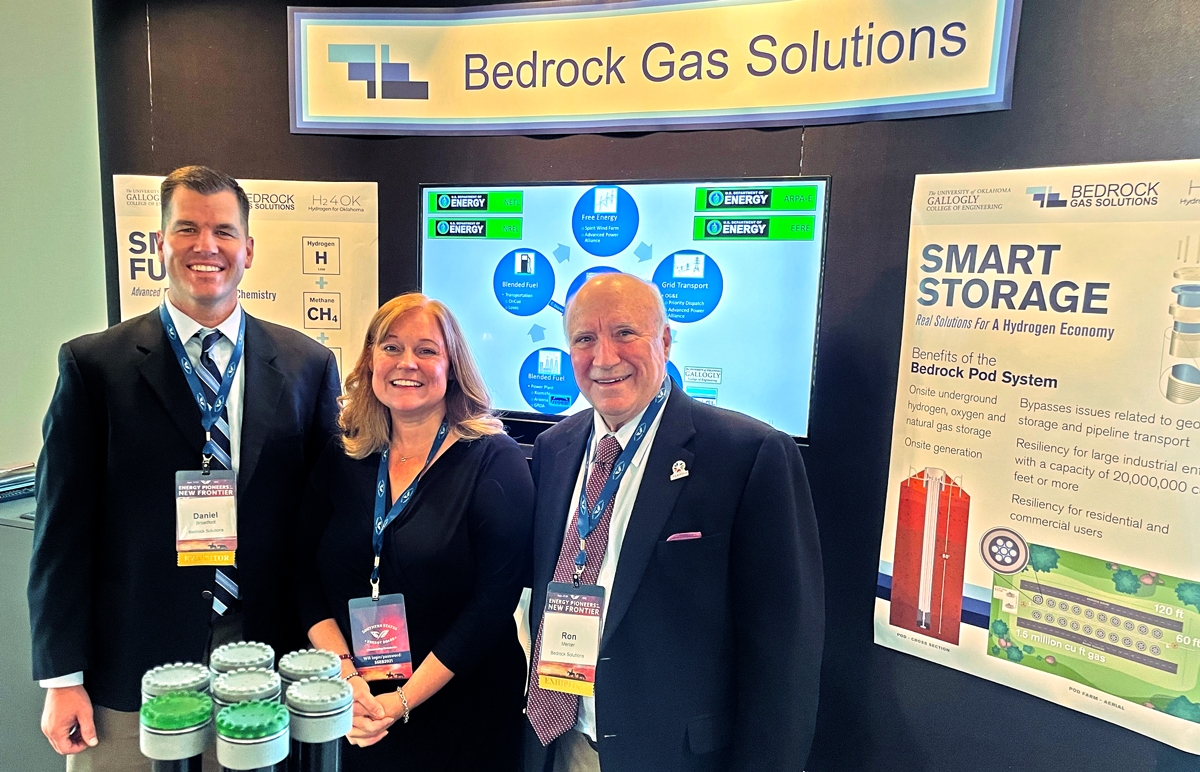The University of Oklahoma is working with Oklahoma City-based Bedrock Gas Solutions as a part of a comprehensive research effort to advance Oklahoma’s hydrogen economy. Bedrock’s “Storage Pod System” provides an innovative solution to onsite underground hydrogen, oxygen and natural gas storage that, for some applications, could bypass common industry challenges related to geologic storage and pipeline transport.
“As we considered the movement toward greener and cleaner energy over the next few decades, it is becoming clear hydrogen will be a significant component of the new energy economy,” said Ron Mercer, president of Bedrock Gas Solutions. “Our technology offers an on-site efficient and affordable way to store, access and utilize hydrogen in power generation safely among many other attractive industrial and commercial uses.”
Mercer continued, “The University of Oklahoma is emerging as a global leader in hydrogen research. They share our view that hydrogen could be a major contributor to reducing and eliminating emissions in the future. We are pleased they recognize the transformative potential of our versatile patented technology and look forward to working with their scientists and engineers to validate and advance our storage solution.”
Hydrogen was first described as an alternative fuel under the 1992 Energy Policy Act. At OU, researchers are investigating leveraging Oklahoma’s resources and expertise in the oil and gas energy sector to become an industry leader in developing hydrogen as a clean alternative to traditional fossil fuel-based energy sources.
Researchers from OU’s Gallogly College of Engineering and Mewbourne College of Earth and Energy recently answered the Department of Energy’s request for information regarding a DOE initiative, the Hydrogen Energy Earthshot, aimed at advancing hydrogen as an affordable and environmentally responsible shift toward decarbonization. The DOE’s request specifically called for “viable hydrogen demonstrations, including specific locations that can help lower the cost of hydrogen, reduce carbon emissions and local air pollution, create good-paying jobs, and provide benefits to disadvantaged communities.”
In their submission, Gallogly College of Engineering associate dean for research and the Dick and Shirley O’Shields professor Zahed Siddique and colleagues describe the ways in which Oklahoma is uniquely positioned to become a proving ground for overcoming the roadblocks of advancing hydrogen production, storage, transportation, and usage.
“What makes OU appealing for advancing the DOE’s investigation is the university’s ability to bridge academic research with industry partners to develop system-level integration,” Siddique said. “This integration allows creation of a hydrogen demonstration site to explore the applications of renewable energy sources on hydrogen production, catalysis to produce green hydrogen from natural gas, sub-surface hydrogen storage, and hydrogen-natural gas blends for power generation and use in transportation. The results of this endeavor could make the state a national leader in a shift toward environmentally responsible hydrogen production, helping move the country toward carbon-neutral energy production.”
OU Norman’s vice president for research and partnerships Tomás Díaz de la Rubia was recently selected to represent the contributions of research and workforce development across Oklahoma’s higher education institutions in a newly formed state-led task force to investigate hydrogen production, storage, distribution and use in Oklahoma.
“Oklahoma’s institutions of higher education are vital to growing a vibrant hydrogen economy for the state and the nation,” said Díaz de la Rubia. “Through private-sector collaborations such as with Bedrock, we are applying OU research to real-world problems, strengthening the state’s economy and preparing the workforce of the future.”


